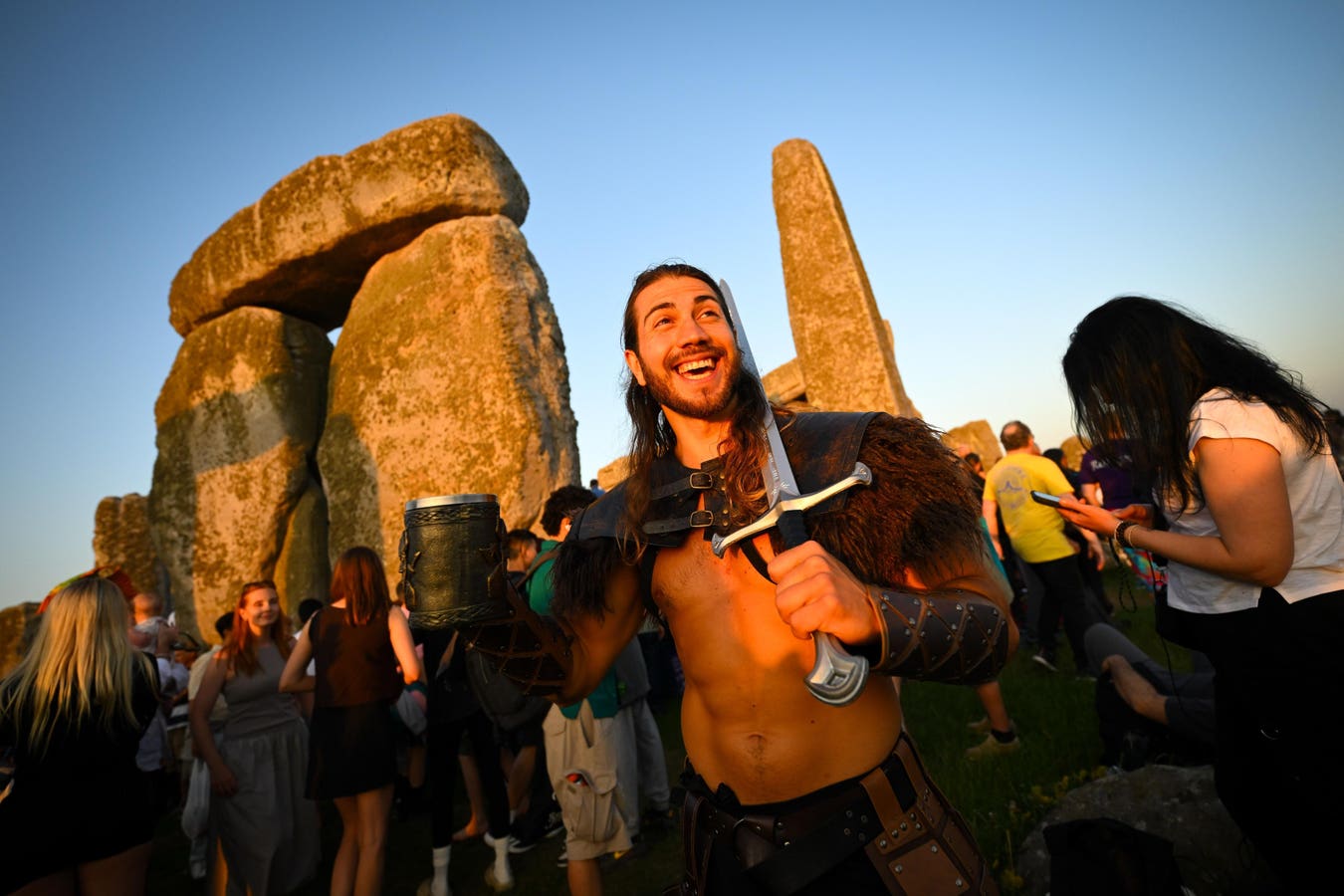Visitors enjoy the sunset at Stonehenge during celebrations of the summer solstice, on June 20, 2025 … More
Sunrise on the solstice has been captured by photographers and early risers around the world this morning as astronomical summer officially began in the Northern Hemisphere.
The global moment occurred at 10:42 p.m. EDT on Friday, Jun. 20 (02:42 UTC on Saturday, Jun. 21), close to sunset in North America. However, the solstice is celebrated at sunrise because it’s then that the biggest effect can be seen.
Visitors enjoy the sunset at Stonehenge during celebrations of the summer solstice, on June 20, 2025 … More
The point on the eastern horizon where the sun rises changes constantly, but at solstice, it reaches its farthest northeast and appears to stand still for a few mornings in succession. Solstice is from the Latin solstitium, meaning “sun stands still.”
A ceremony where the solstice king and queen of the land anoint the people at Stonehenge during … More
As a bonus, those who rose to see the solstice sunrise also glimpsed the spectacular sight of a waning crescent moon between the ringed planet Saturn and the much brighter planet Venus. The sight will be visible for a few mornings in a row, with the moon moving closer to Venus.
Visitors dance during the sunset at Stonehenge during celebrations of the summer solstice, on June … More
The conjunction offered a dramatic beginning to the longest day, which was witnessed by ancient and modern monuments alike. In Wiltshire, England, 15,000 people gathered at Stonehenge to witness the sunrise just above the Heel Stone, about 250 feet to the northeast, continuing a tradition that dates back millennia.
Visitors enjoy the sunset at Stonehenge during celebrations of the summer solstice, on June 20, 2025 … More
In North America, celebrations were hosted in New York City, with the 23rd Annual Solstice in Times Square: Mind Over Madness Yoga event seeing hundreds stretch toward the sky beneath towering billboards. Meanwhile, the 51st Santa Barbara Summer Solstice Celebration in California saw parades fill the streets with music, dance, and colorful costumes in honor of the arrival of summer.
he sun rises behind the skyline of midtown Manhattan and the Empire State Building in New York City, … More
Though the solstice marked the longest day in the Northern Hemisphere, it’s not necessarily the warmest. Since Earth is mostly water, there’s a lag time between the maximum hours of sunshine and the hottest days.
The rising sun passes behind the Washington Monument to begin the longest day of the year in North … More
Though the solstice saw the most hours of light, the shift has already begun. From here, the days will slowly shorten in the Northern Hemisphere, with the equinox on Sept. 22 seeing day and night nearly equal. It will be followed by the solstice on Dec. 21 and the equinox on March 20, 2026. The next summer solstice will occur at 4:25 a.m. EDT on Sunday, June 21, 2026.
Wishing you clear skies and wide eyes.









